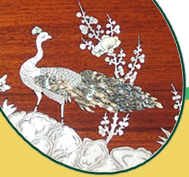

|
| |
|
|
|
|
|
|
|
|
|
|
|
|
|
|
|
|
|
|
|
 |
|
|
|
|
|||||||||||||||
| |
|
||||||||||||||||||
| |
|
|
|||||||||||||||||
 |
|
||||||||||||||||||
| |
|||||||||||||||||||
| |
|
||||||||||||||||||
| |
|
||||||||||||||||||
| |
|
||||||||||||||||||
| |
|
|
|||||||||||||||||
| |
|
|
|||||||||||||||||
| |
Home | |
|||||||||||||||||
| |
|
||||||||||||||||||
| |
Site map | |
|||||||||||||||||
| |
|||||||||||||||||||
| |
Contact Us | |
|||||||||||||||||
| |
|
||||||||||||||||||
| |
|
|
|||||||||||||||||
| |
|||||||||||||||||||
| |
|
||||||||||||||||||
| |
|
||||||||||||||||||
| |
|||||||||||||||||||
| An introduction to
THAI ROSEWOOD FURNITURE ORIENTAL DESIGN RAW MATERIAL The furniture is made by Rosewood which is a common Western name of FA-LEE as called by the Chinese. The common local name is PRADU or PRADUAK GENUS -PTEROCARPUS SPECIE -MACROCARPUS It has the same GENUS as the PALISANDER or BRAZILIAN ROSAWOOD but different species. COUNTRY OF ORGIN: THAILAND Rosewood is a high class wood for furniture, it has beautiful grains, very stable and durable, quite expensive and increasingly rare. TREATMENT OF MOIOSTURE CONTENT INROSEWOOD With the aid of modern technology, the wood is kiln dried with hot boiling steam for about 21 days in the chamber. The moisture content in the wood is brought down to about 5-6% equilibrium moisture content, but since the relative humidity in Thailand is about 80% throughout the year, moisture will tend to escape back in to the wood while it is in production and the moisture content in the finished good before export is about 10%which is internationally acceptable. However in parts of the world where heater is used in the house extensively, we recommend that they should control the moisture content in their house to be at least 30-40% by using a humidifier, otherwise when the moisture in the air is below 10%,the moisture that is still in the wood will dry out and cause shrinkage. Production The production of Rosewood furniture oriental style can be devided mainly into two sections. The preparation of raw materials, by using modern technology and machinery,
the parts of each individual joints are cut, this section consume about
30% of the total production work.
“The Chinese three-way mitred double locking mortise and tenon with floating panel” would horrify a furniture production engineer because of extreme difficulty in mass producing it. The floating panel is cut from a single piece of wood usually about 9 mm. In thickness and is tongued and grooved into the rails. To support it and prevent any tendency to curl, transverse braces are dovetail grooved into the underside and then tenoned into the long rails of frame. This assembly is found in all panels, be they table tops, door panels or seat frames. Carving High speed routers are used to rough cutting after the carving designs were prepared by the master, but from then on, all the carving work is done by hand with carving gouges and chisels. The impeccable lacquer finish The manufacturers of Rosewood furniture oriental design have been using the centuries old Chinese predecessor – NATURAL LAQUER. It might take a little longer to apply, but it is much deeper and more beautiful than synthetic equivalents. NATURAL LACQUER is an exudate from the “Lacquer tree “ which is indigenous to China. It is collected in much the same way as latex, is partially evaporated in the sun, and is very expensive After the final scraping and shaping of the first coarse sanding, a lacquer-based filler is applied to fill the characteristic open grain of Rosewood. This takes eight hours to dry. The furniture is again sanded and a second application of the filler is made which is in turn sanded when dry, with successively finer grade abrasives. The first layer of lacquer is then applied to seal the grain. After sanding with flour paper, if the color of the wood is to be changed, aniline dye is painted on and rubbed down. Then the polishing begins with successive application of clear lacquer. This will be after a minimum of four coating, a total of seven applications of lacquer. The finish that results from all this hard work has some remarkable properties, not only is it heat–proof, but it is not permanently marked by a wet glass or hot wet pan. The surface is not as hard as a Polyurethane lacquer, but small scratches will polish out. Above all, the natural quality of the finish allow it to mature with age and wear, so that when the products of today become the antiques of the future, the sun – bleached gold of Rosewood will be enhanced by the patina of the natural lacquer. Product Quality Quarantee: The carving and the mother of pearl inlaid are all handmade. |
||||
| SIPHYA FURNITURE & CONSTRUCTION ROP. 106/5 Navamin Road, Klongkum, Buengkum, Bangkok Thailand 10240. Tel.(662)7347317-8,377-6583 Fax:(662)377-1284 Attention: Ms.Waraporn Email:siphyafurniture@hotmail.com |
Copyright ? 2000. All trademarks are acknowledged
and remain the property of their owners. Use of this website constitutes acceptance of the website privacy and security statement.
|